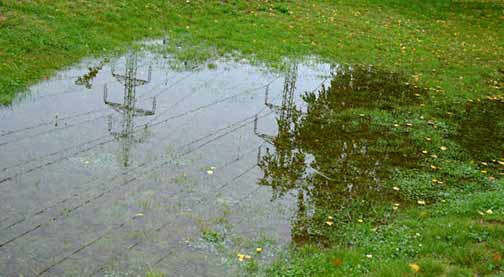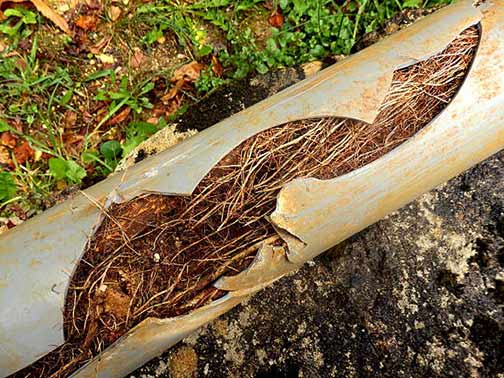
Maintaining a healthy sewer line is crucial for the overall functionality of your home’s plumbing system. A compromised sewer line can lead to severe plumbing issues, costly repairs, and significant inconvenience. Understanding the signs of trouble in your sewer line can help you address problems early and avoid extensive damage. Below we will guide you through the common indicators that suggest you might have a problem with your sewer line, including unusual sounds, water pooling, and strong odors.
Unusual Sounds: The Early Warning Signals
One of the first signs that there may be trouble in your sewer line is the presence of unusual sounds. These sounds can be an early warning signal that something is amiss. Pay close attention to the following:
Gurgling Noises: If you hear gurgling noises coming from your drains, it could indicate a blockage or a buildup of debris in your sewer line. This sound is often caused by trapped air that is struggling to escape through the obstruction.
Bubbling Sounds: Bubbling sounds in your toilet or sink can be a sign of a sewer line issue. This occurs when air is forced back up through the plumbing system due to a blockage in the sewer line.
Persistent Draining Sounds: If you notice persistent draining sounds even when no water is being used, it may indicate a problem with your sewer line. This could be due to a partial blockage or a damaged pipe.
Water Pooling: Visible Signs of Sewer Line Issues
Water pooling is another clear indicator that there may be trouble with your sewer line. This can manifest in various ways, including:
Standing Water in Yard: If you notice standing water in your yard, especially near the location of the sewer line, it could be a sign of a leak or break in the sewer pipe. This water may have a foul odor, indicating it is coming from the sewer line.
Water Backups: Frequent water backups in your sinks, toilets, or showers can indicate a blockage in your sewer line. This is often caused by debris, tree roots, or other obstructions that prevent water from flowing freely.
Unexplained Dampness: Unexplained dampness or wet spots in your home, particularly in the basement or around the foundation, can be a sign of a sewer line problem. This could be due to a leak or crack in the sewer pipe.
Strong Odors: The Smell of Trouble
Strong and unpleasant odors are often one of the most noticeable signs of a sewer line issue. These odors can be indicative of serious problems, such as:
Sewer Gas Smell: A strong smell of sewer gas in or around your home is a clear sign of a sewer line problem. This odor is often caused by a cracked or broken sewer pipe that allows gas to escape.
Persistent Bad Smells: If you notice persistent bad smells coming from your drains, it could indicate a blockage or buildup of waste in your sewer line. This can cause unpleasant odors to seep into your home.
Mold and Mildew Odors: The presence of mold and mildew odors in your home can be a sign of a sewer line issue. This is often caused by a leak in the sewer pipe that allows moisture to accumulate, creating an ideal environment for mold and mildew growth.
Slow Drains: A Common Symptom of Sewer Line Problems
Slow drains are a common symptom of sewer line problems and should not be ignored. This issue can affect multiple drains in your home and is often caused by:
Partial Blockages: Partial blockages in your sewer line can cause water to drain slowly from your sinks, showers, and toilets. These blockages can be caused by debris, grease, or other materials that accumulate over time.
Tree Root Intrusion: Tree roots can infiltrate your sewer line, causing blockages and damage to the pipe. This can lead to slow drains and other plumbing issues.
Pipe Damage: Damage to your sewer line, such as cracks or breaks, can also cause slow drains. This damage can be caused by shifting soil, corrosion, or other factors.

Unusual Lawn Growth: A Hidden Sign of Sewer Line Trouble
Unusual lawn growth can be a hidden sign of sewer line trouble. If you notice patches of your lawn that are greener and more lush than the surrounding areas, it could indicate a leak in your sewer line. The nutrients from the leaking sewage can promote excessive growth in these areas.
Pest Infestations: An Unexpected Consequence of Sewer Line Issues
Pest infestations can be an unexpected consequence of sewer line issues. Rodents and insects are attracted to the moisture and food sources provided by a leaking or damaged sewer line. If you notice an increase in pests around your home, it could be a sign of a sewer line problem.
Foundation Cracks: A Serious Indicator of Sewer Line Damage
Foundation cracks can be a serious indicator of sewer line damage. A leaking or broken sewer line can cause the soil around your home to shift, leading to cracks in your foundation. These cracks can compromise the structural integrity of your home and should be addressed immediately.
Professional Assessment: The Importance of Expert Evaluation
While identifying the signs of sewer line trouble is crucial, it is equally important to seek professional assessment. A licensed plumber can conduct a thorough video camera inspection of your sewer line pinpoint the exact location and cause of the problem. This expert evaluation ensures that the issue is accurately diagnosed and effectively addressed, preventing further damage and costly repairs.
Preventive Measures: Keeping Your Sewer Line Healthy
Taking preventive measures can help maintain the health of your sewer line and avoid future problems. Regular maintenance, such as periodic hydro jet drain cleaning and sewer camera inspection, can identify potential issues before they escalate. Avoid flushing non-biodegradable items and be mindful of what goes down your drains to prevent blockages. Additionally, consider planting trees and shrubs away from the sewer line to reduce the risk of root intrusion.
Conclusion: Addressing Sewer Line Issues Promptly
Identifying trouble in your sewer line early can help you avoid costly repairs and significant inconvenience. By paying attention to unusual sounds, water pooling, strong odors, slow drains, unusual lawn growth, pest infestations, and foundation cracks, you can catch sewer line problems before they escalate. If you suspect an issue with your sewer line, it is important to contact a professional plumber to assess and address the problem promptly.

